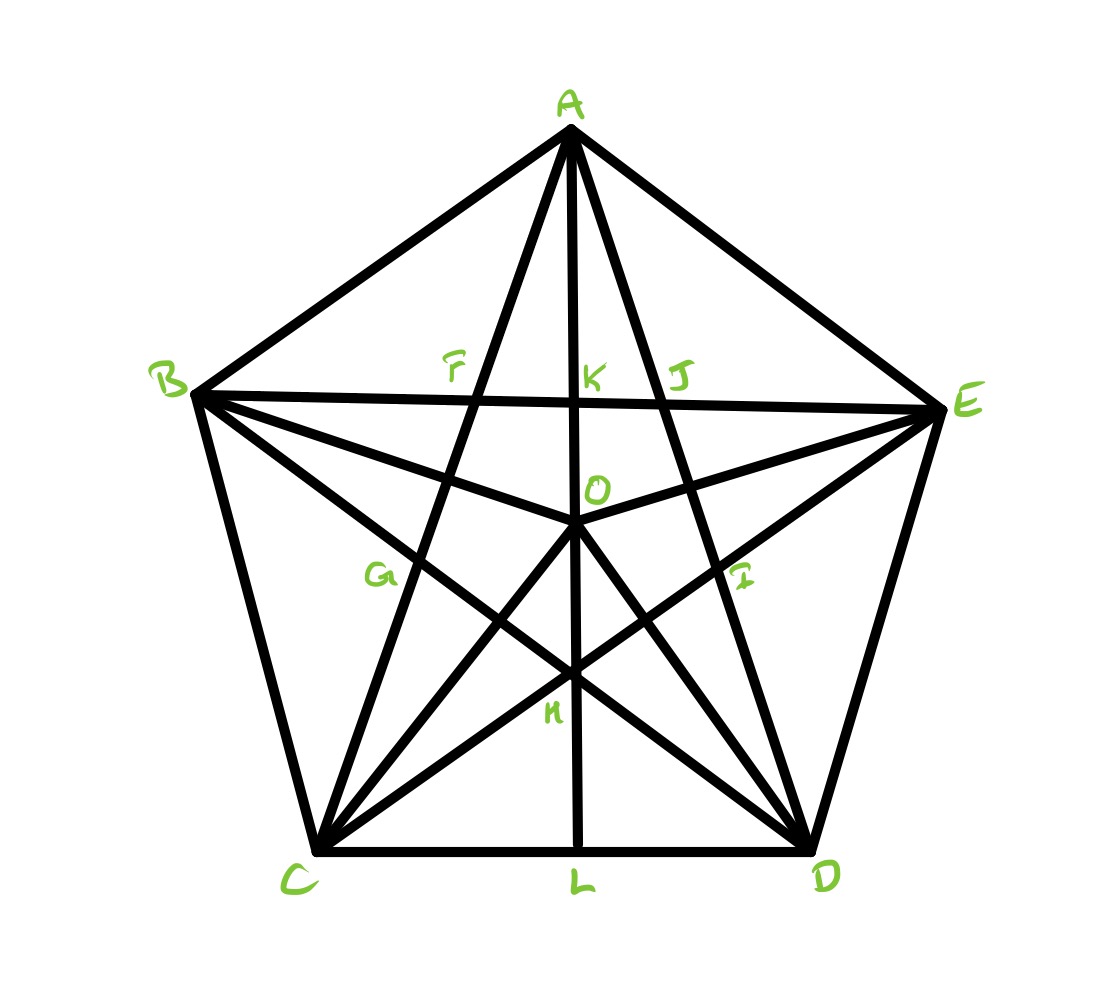Notes
pentagon
Pentagon
A pentagon is a polygon with five sides.
Regular Pentagon
- The exterior angle in a regular pentagon is .
- The interior angle in a regular pentagon is .
- The length of the line across a regular pentagon is the golden ratio times the side length.
Lengths and Angles in a Regular Pentagon

The exterior angle of a regular pentagon is , so the interior angle is .
With the points labelled as in the above diagram, this means that triangle is an isosceles triangle with apex angle so its base angles are . Therefore, angles and are both , meaning that angle . So triangle is also isosceles with base angles .
Triangle is also isosceles with angles , , and . Then triangle has angles , , and angle so is also isosceles. These three triangles are therefore all similar, and the scale factors are such that the short side of has the same length as the long sides of , and the short side of has the same length as the long sides of .
Let be the length of , and let be the length scale factor from to , so then has length , and has length . Since is isosceles, and have the same length, and this is equal to the lengths of and which is . Hence , or equivalently . Together with the condition that , this establishes as the golden ratio.
Now consider the two radii of the pentagon: the radius of the incircle and the circumcircle, equivalently the lengths of and . Write these as and , respectively. Let be the side length of the pentagon. Viewing as the base of triangle , its area is . Viewing as its base, its height is half the length of which is so its area is . Equating these establishes that .
Lastly, the total height of the pentagon, which is the length of , relates to the side length via Pythagoras' theorem applied to the triangle . The length of is half a side-length, , and the length of is . So has length: